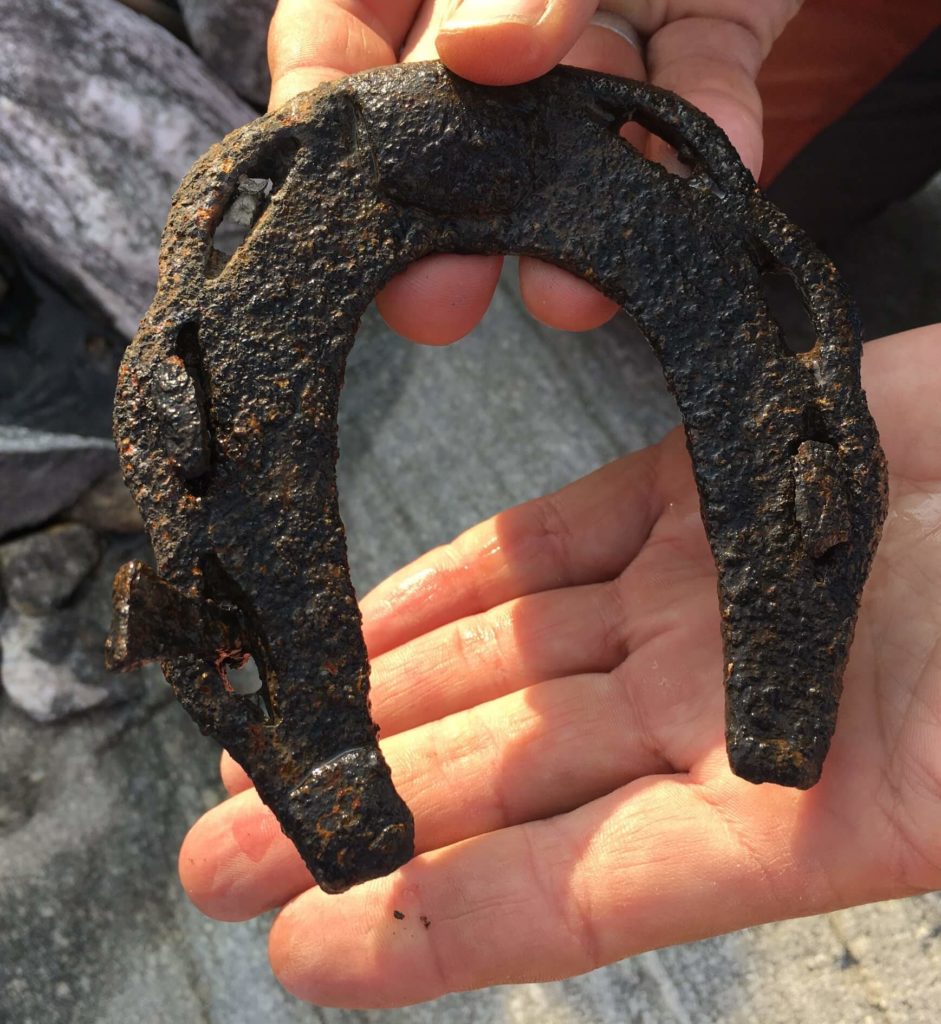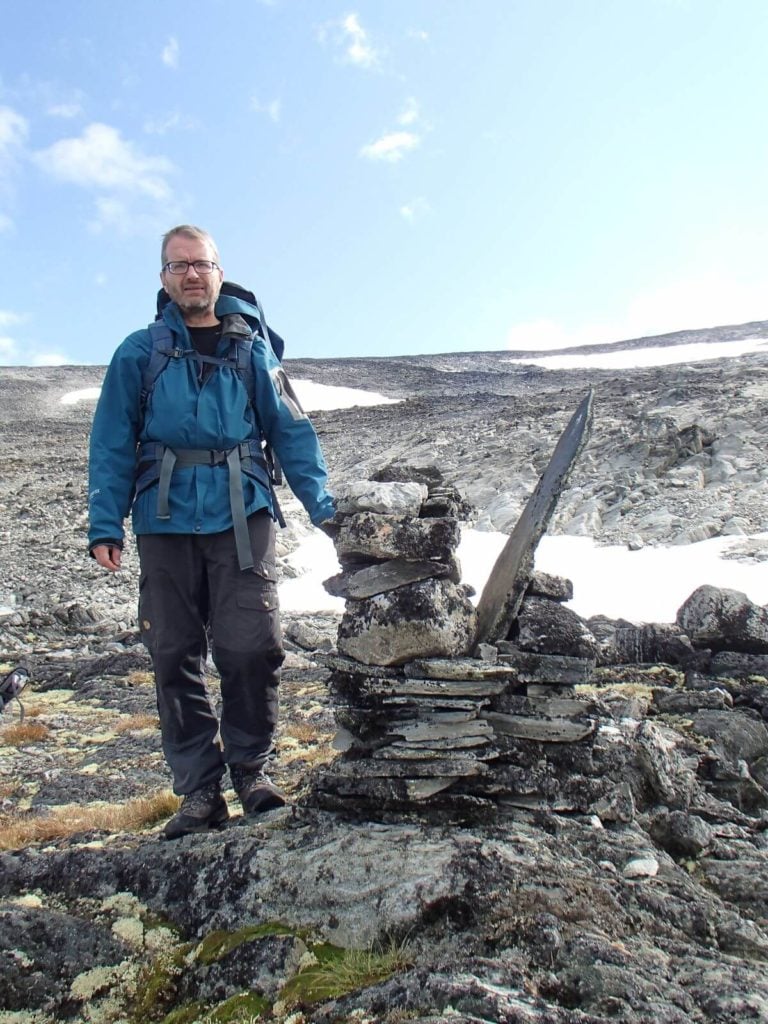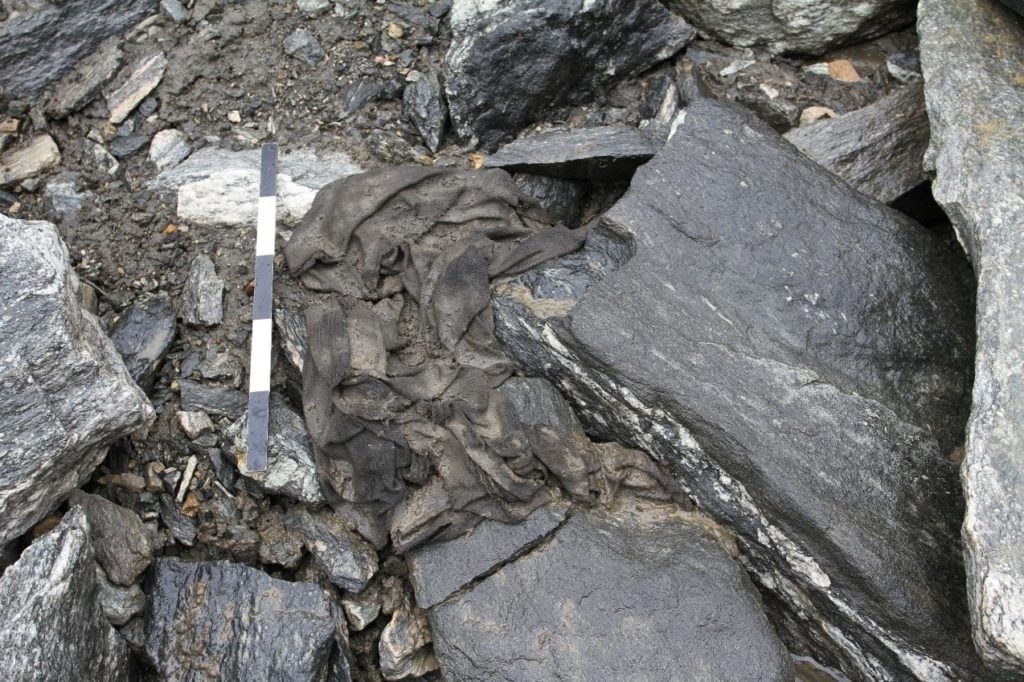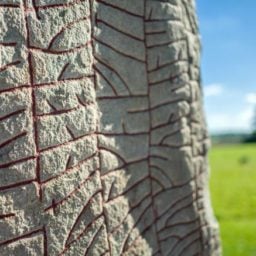A trove of about 800 Viking artifacts, some frozen in an icy mountain range in Norway for more than 1,000 years, have come to light as a result of global warming. The revelations prove that the mountain pass served as an important part of a trade network with the rest of the Viking world and that it was likely used to transport goods such as cheese, butter, reindeer pelts, and antlers between farms.
“The Viking age is one of small-scale globalization: They’re sourcing raw materials from all over,” Søren Michael Sindbæk, an archaeologist at Aarhus University in Denmark, who was not involved in the study, told Science. “This is the first site where we have good chronology and the finds to illustrate that.”
In a melted ice patch on the mountain slopes of Norway’s Innlandet County, archaeologists found a leather shoe, a woolen mitten, and a tunic. There were also feathered arrowheads, horseshoes—and a horse snowshoe—walking sticks, a piece of a sled, kitchen utensils, and even droppings from Viking packhorses.
Along the path they found stone cairns that would have marked the way, with a stone shelter built near the top of the ice patch. Collectively, these artifacts suggest that travelers were commonplace in the mountains, despite their remoteness and the harsh weather conditions.

Horseshoe from the 11th to mid-13th century, found at Lendbreen in 2018. Photo by Espen Finstad, courtesy of Secrets of the Ice.
“It may seem counterintuitive, but high mountains sometimes did serve as major communications routes, instead of major barriers,” study co-author James Barrett told Science. “It’s easy to travel at high elevations, once you get up there and there’s snow on the ground.”
The discoveries are part of the burgeoning field of glacial archaeology, made possible as climate change shrinks ice flows around the world. Norway’s Glacier Archaeology Program, led by Innlandet County Council and the Museum of Cultural History at the University of Oslo, began research in the area in 2006, joining similar programs in other countries in researching the field.
The Norwegian “Secrets of the Ice” findings were published last week in the scientific journal Antiquity. The paper declared the Lendbreen ice patch on the Lomseggen ridge, which has been melting rapidly since 2011, to be the “first such ice site discovered in Northern Europe.” Previous finds of a similar nature had only been made in the Alps.

An archaeologist with one of the stone cairns marking the mountain pass at Lendbreen. The light-colored rocks in the background were covered with snow and ice until recently. Photo by James Barrett, University of Cambridge.
“Past travelers left behind lots of artifacts, frozen in time by the ice,” wrote the lead archaeologist, Lars Pilø, on the project website. “These artifacts can tell us when people traveled, when travel was at its most intense, why people traveled across the mountains and even who the travelers were.”
“It was clearly a route of special significance,” the journal noted. The pass was in use between the years 300 and 1500 AD, and most active around the year 1000. Its use declined with the Little Ice Age, around 1300, and the Black Death, around 1400.

The Lendbreen tunic, which dates to the year 300, is the oldest piece of clothing ever found in Norway. Photo courtesy of Secrets of the Ice.
The first major evidence that humans ventured across inhospitable mountain passes was the discovery of Ötzi the Tyrolean Iceman in the Italian Alps in 1991. The snow and ice had preserved the man’s body for 5,300 years, allowing scientists to study the bacteria in his gut. What they found helped track the movements of pathogens, and by extension, human migration.
The find “really flipped a switch,” Stephanie Rogers, a geoscientist at Auburn University, told the New York Times. “What was that person doing up there?… if we found something in this place, we are going to find something in other places.”












